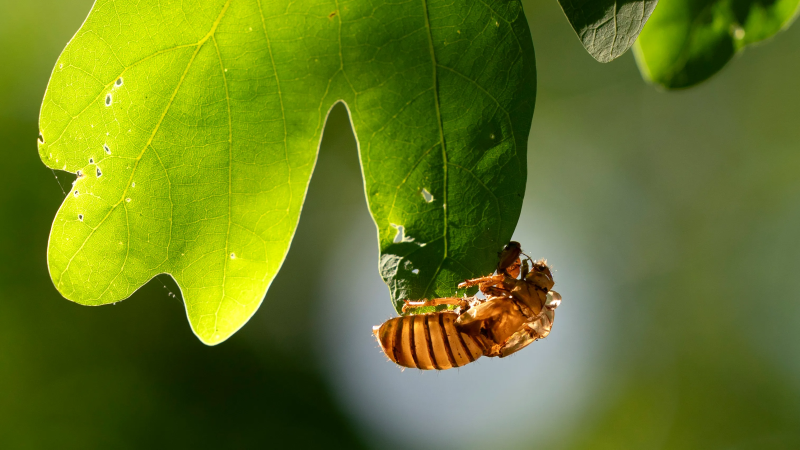STD infecting periodical cicadas can turn them into 'zombies': Here's what to know
There's more than just noise passing between the trillions of periodical cicadas that have emerged in the U.S. this year. For some of those insects, there is also the chance of getting a sexually transmitted fungus that can turn them into "zombies" and end in an ugly death.
The white fungus, known in the scientific community as Massospora cicadina, is a sexually transmitted pathogen, USA TODAY reported in 2020.
It has already been detected in cicadas this year in parts of southern Illinois and may soon reach the Chicago area, WGN9 in Chicago reported.
Jim Louderman, a collection’s assistant at Chicago’s Field Museum of Natural History, told the local station that the fungus only targets the 13- and 17-year periodical cicadas, both of which are found in Illinois this year. He said the fungus has infected cicadas in Champaign in eastern Illinois and is expected to migrate north to Chicago.
The 13-year Brood XIX is located mainly in Southeastern states, including parts of southern Illinois. The 17-year Brood XIII is mainly in the Midwest, including northern Illinois and the Chicago area. The two broods this year have not emerged together since 1803, and are not expected to do so again until 2245.
Here's what to know about the fungus.
2024 cicada map:Where to find Brood XIII, Brood XIX around the Midwest and Southeast
When will cicadas go away?That depends where you live, but some have already started to die off
What is the fungus infecting periodical cicadas?
Massospora cicadina is a sexually transmitted pathogen affecting periodical cicadas that results in severe dismemberment and eventually death.
The chemicals found in cicadas after they have been infected are similar to those found in hallucinogenic mushrooms, according to a study published by PLOS Pathogens in 2020.
What happens when cicadas are infected?
John Cooley, an entomologist at the University of Connecticut, told the Independent in April that once the fungus takes over a male cicada’s body, their testes are the first to go, sterilizing the insect before killing it.
The disease acts like a parasite, eating its way through the flying insect’s limbs and other parts of their body. Infected cicadas begin to lose those limbs bit by bit until there’s nothing left.
These “zombies” very quickly become a threat to any and all neighboring cicadas as males take flight, continuing to spread the fungus around, USA TODAY previously reported.
The fungus causes infected males to jerk their wings, making a familiar humming noise only made by female cicadas. The noise attracts other males, who think there is a female ready to mate.
“Thus spreading the fungus to the attracted males,” until there is no healthy cicada left in the bunch.
Is this a new disease for cicadas?
This isn't the first time this fungus has been seen in periodical cicada populations, Cooley previously told USA TODAY.
The same thing happened four years ago, when the “mind-controlling” disease ravaged members of that year's cicada brood, according to previous USA TODAY reporting. At least 10% of cicadas in the Midwest were infected with the fungus, Cooley told the Independent.
The issue is "even stranger than science fiction. This is a sexually transmitted zombie disease,” Cooley said.

2024 cicada map: Where to find Broods XIII, XIX this year
The two cicada broods were projected to emerge in a combined 17 states across the South and Midwest. They emerge once the soil eight inches underground reaches 64 degrees, which began in many states in April and May and will last through late June.
The two broods last emerged together in 1803, when Thomas Jefferson was president.
Disclaimer: The copyright of this article belongs to the original author. Reposting this article is solely for the purpose of information dissemination and does not constitute any investment advice. If there is any infringement, please contact us immediately. We will make corrections or deletions as necessary. Thank you.







